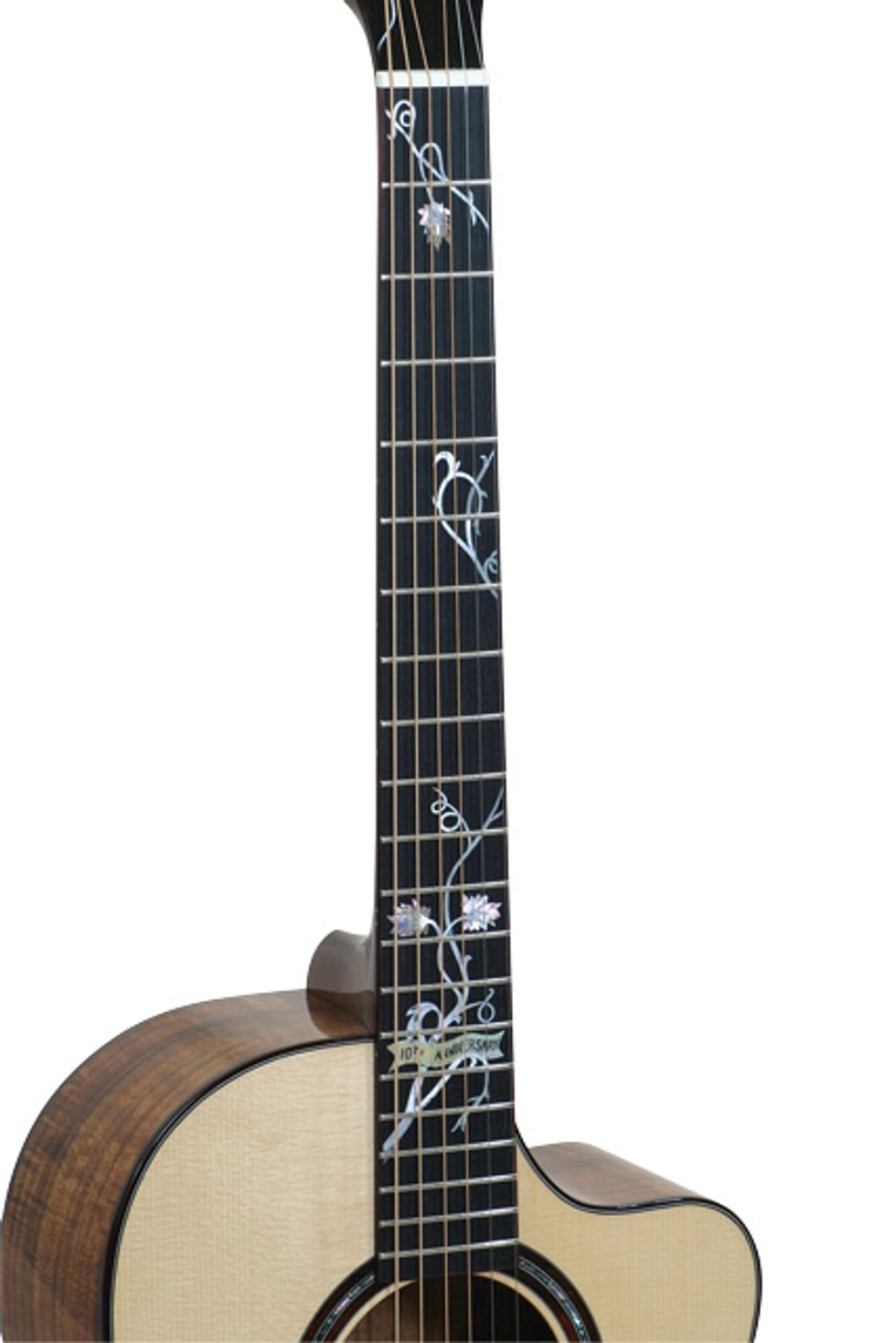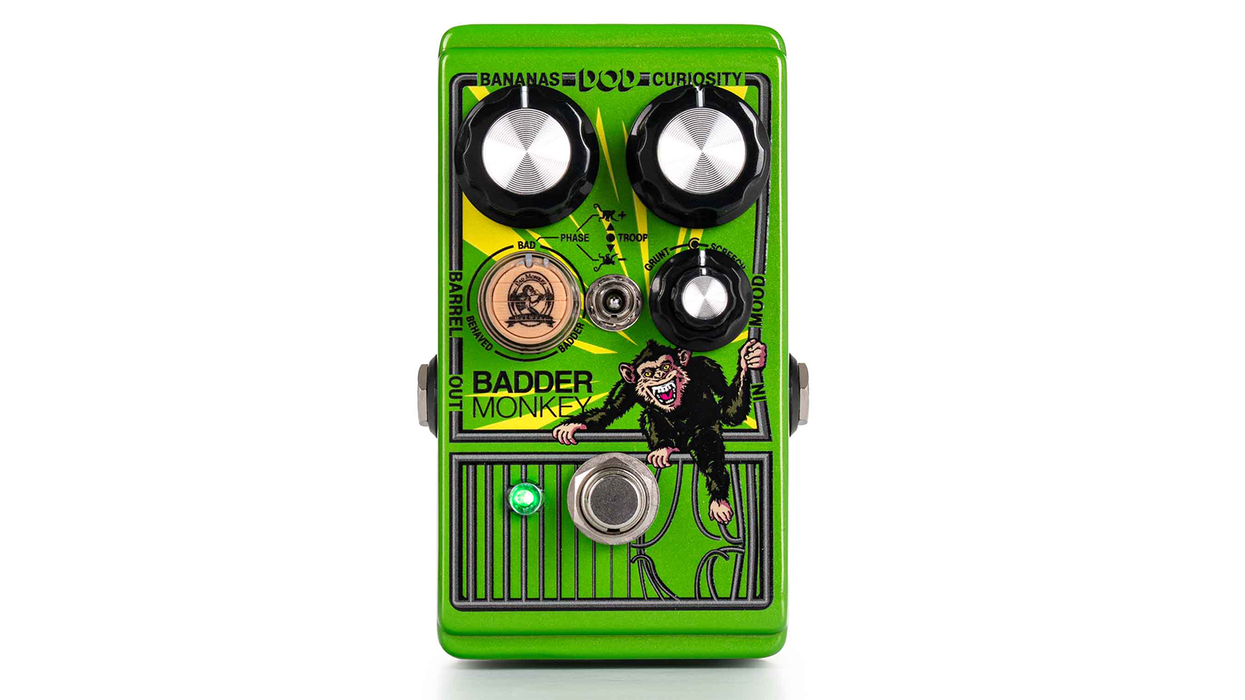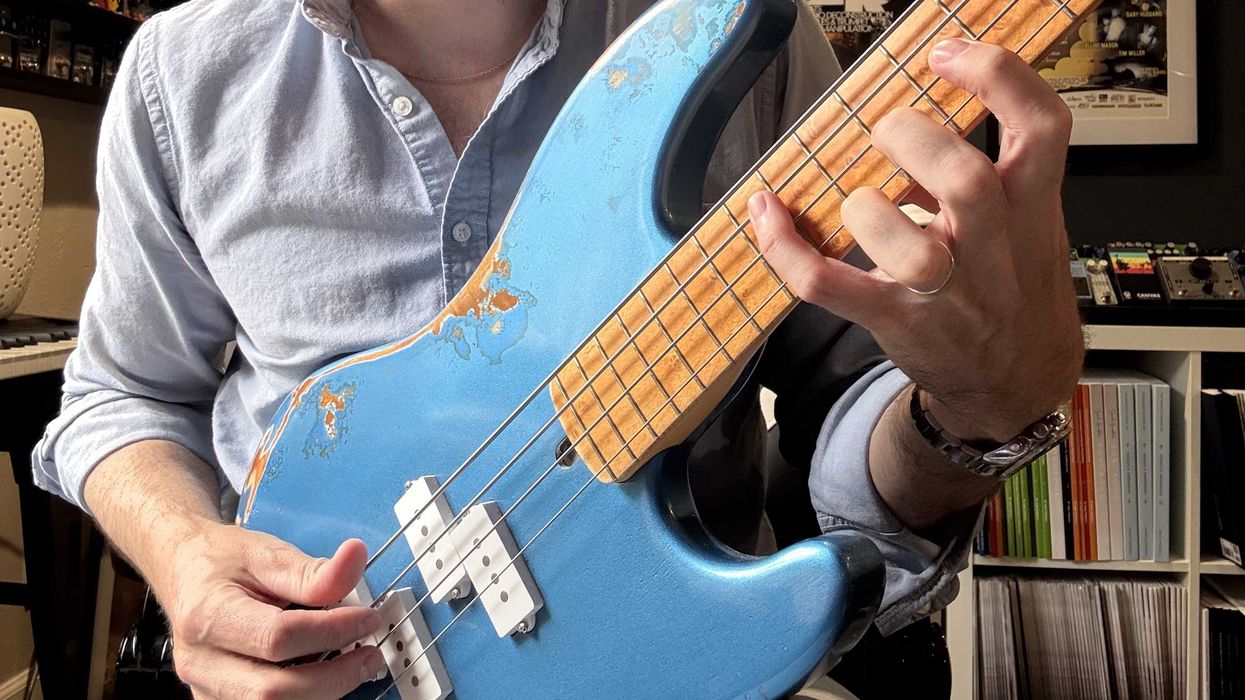In the first three parts of this series about ordering a custom guitar, we covered the basics on body and neck construction. This month, we’ll talk a bit about inlay and other final particulars.
Inlays
There’s nothing that can make or break the appearance of a custom guitar the way that inlays can. You can make your guitar a one-of-a-kind work of art that will be the envy of your friends—or the butt of jokes anytime you leave the room. In our 18 years in this business, we’ve built both when asked to do so. We’ve also turned down a few requests. I usually discourage anyone from thinking about resale value when ordering a guitar, but inlay is a part of the equation that is so taste specific, that it’s a good idea to ask yourself beforehand if there’s any chance that you’ll want to sell your guitar someday. If there were any chance, which pretty much is always the case, then I’d recommend staying clear of anything that’s too personal. Even having your initials tastefully done at the 15th fret—which we occasionally do—could very well put you in a situation of having to find a buyer with the same three initials should you ever want to sell. Plus, some of our initials may spell something odd. (My brother’s initials are M.A.D., for instance.)
Animals are very popular, and they can make cool inlays. Seagulls in flight sounded funny to me at first, but actually turned out to be very appealing in the end. Animal inlays can also turn out quite goofy, and the cartoon skunks we did (think Pepe Le Pew) on not one, but two custom instruments were, in fact, goofy.
Vines and other elaborate inlays for the fretboard are a bold statement and can be breathtaking. They’re also very expensive and you may end up thinking of your guitar as more of a presentation piece, rather than a working instrument. Just keep in mind that the more engraving involved in an inlay, the more expensive it’ll be. Also, it’s possible there might be problems down the road when it’s time for a refret. When your fretboard gets sanded for re-fretting, your engraving can be sanded through and need to be redone, not to mention that your repairperson might not specialize in engraving work.
Another thing to consider with a vine or other elaborate fretboard inlay is that you may be a player who looks at the fretboard position markers when you play. Some people use the side dots for this, so it’s not an issue. But if you’re like me and tend to look at the topside markers for spatial reference, try out a guitar with a vine on the fretboard first, and make sure that you aren’t lost out there without clear spaces between the inlays.

A vine inlay scheme along your fretboard can be a gorgeous option for your custom instrument, but there's more to consider beyond the aesthetic.
Shell Types
Several different types of shell are commonly used for inlay, with mother-of-pearl (MOP) and abalone (of which there are several types and colors) being the most common. MOP is usually silver-pearl colored, but can be gold, which will really add flair to some inlays. It also tends to show up better against the backdrop of the fretboard and the headstock overlay.
Abalone is very colorful and adds real beauty most of the time. Darker-colored abalone inlays, however, can get lost in an ebony fretboard, resulting in a loss of detail. Conversely, abalone can sometimes be overdone, resulting in a loss of tastefulness in the overall scheme—but taste is certainly in the eye of the beholder.
There are also sub-varieties of abalone to consider, such as green heart and paua. Green heart tends to be, yes, green, while paua is bluer in color. Keep in mind that abalone is a naturally occurring substance, so there’s no way to absolutely control what colors may come out of your particular set of abalone inlays. I’ve heard people complain that the inlays they ended up with were more pink, green, or blue than they anticipated. While your luthier can control the color to a degree by choosing certain sub-species, he or she has limited control over Mother Nature. This also applies when it comes to wood grains and colors, and it always gives me a gray hair when someone hasn’t considered that we’re dealing with natural products here. No two sets of inlays are alike, but that is the real beauty of them.
As mentioned before in our journey through a custom build, let your builder guide you and trust their advice. They can save you from a fate you may regret later, which in the case of inlays could be less embarrassing than the Yosemite Sam my friend has tattooed on his arm forever, but it’s still a good precaution!

![Rig Rundown: Russian Circles’ Mike Sullivan [2025]](https://www.premierguitar.com/media-library/youtube.jpg?id=62303631&width=1245&height=700&quality=70&coordinates=0%2C0%2C0%2C0)












